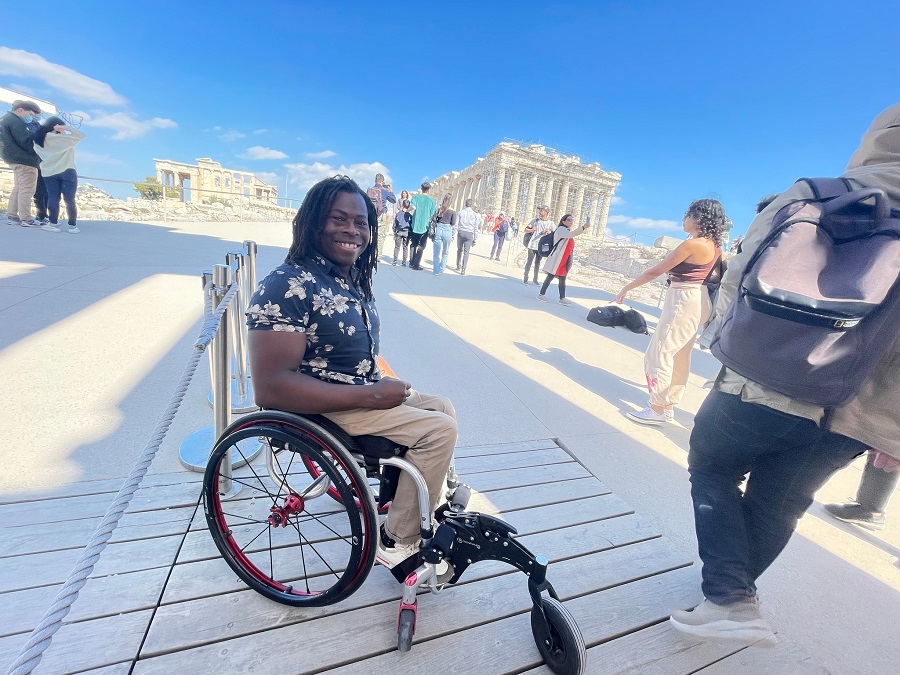
The Acropolis of Athens has become accessible to the visually impaired through a route unveiled on Thursday that combines models of monuments, haptic feedback points, and signs in Greek and English Braille.
During the unveiling, Culture and Sports Minister Lina Mendoni noted that “equal access to cultural goods is a goal, an objective, and a bet for the ministry and its services.”
The haptic course features twelve stops and four information points, with signs in Greek and English Braille and a tactile 3D model of the archaeological site of the Acropolis, also with Braille notation in Greek and English.
Accompanying the visit, among other types of aid, are guides in large print and in Braille in six languages. Guards on the site have been trained to assist visually impaired visitors with the available tools.
In addition, an app for Android and IOS cellphones is also available through the Ephorate of the City of Athens.
The special route for the blind was implemented in collaboration with the Ephorate of Antiquities of the City of Athens and the Lighthouse for the Blind of Greece organization with the support and sponsorship of the Onassis Foundation.
Acropolis became accessible to people with mobility issues

The plans to provide people with special needs equal access to the UNESCO monument began 2019 and include the installation of a slope lift for people with mobility issues.
In 2020, a controversy erupted when Greek authorities approved a plan to cement certain footpaths on the Acropolis. “The disabled, the elderly, people with various problems have the right to see and admire up close the Acropolis monuments,” the Ministry of Culture said at the time.
The official statement also said that “for twenty years, these routes have been paved with cement. The difference is that over time and with millions of visitors walking on them, all these years, the material has been destroyed and the routes are a trap even for those who do not have mobility difficulties.”
However, archaeologists have severely criticized the decision arguing that the routes for the disabled could have been made with more environmentally-friendly materials instead of cement.
In August 2022, during the climax of the tourist season, Acropolis welcomed sixteen thousand visitors a day, a sharp increase over the previous year.
See all the latest news from Greece and the world at Greekreporter.com. Contact our newsroom to report an update or send your story, photos and videos. Follow GR on Google News and subscribe here to our daily email!



